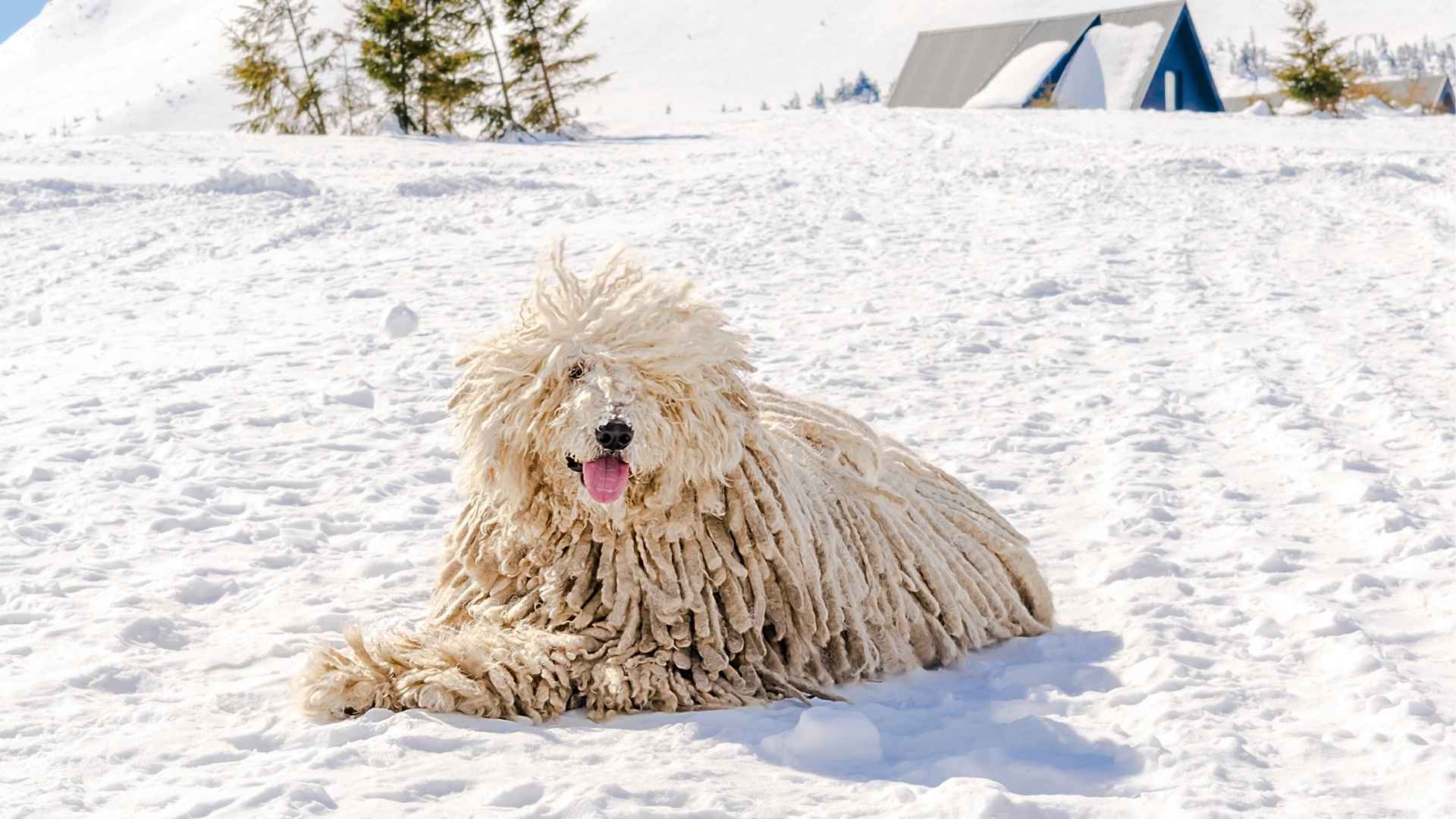Dogs may be humanity’s oldest friends, but not every breed enjoys the same level of adoration. While some pups are Instagram darlings, others quietly wag their tails in the shadows of popularity polls.
These breeds aren’t necessarily bad — in fact, many are intelligent, loyal, and even heroic — but for various reasons, they’ve found themselves low on the canine popularity ladder. Sometimes it’s due to misunderstood temperaments, niche needs that don’t fit the average household, or appearances that stray from the “cute” stereotype.
Other times, it’s simply bad PR. This list isn’t here to shame — it’s here to spotlight these under-appreciated companions, reveal the quirks that set them apart, and maybe even change a few minds. Because in the end, “least beloved” doesn’t mean “least deserving” — it just means their charm is still waiting to be discovered.
Least Beloved Dog Breeds In The World
1. Sloughi
The Sloughi, often dubbed the “Arabian Greyhound,” is a North African sighthound celebrated for its elegance and speed. Historically, these dogs were cherished by nomadic tribes for their hunting prowess across the vast deserts of Morocco, Algeria, Libya, and Tunisia. Despite their rich heritage, Sloughis remain relatively rare outside their native regions.
Sloughis are known for their aloofness, especially towards strangers, due to their history as guardians and hunters. They form strong bonds with their families. PetMD states that while they may appear reserved, their loyalty and gentle nature shine through with proper socialization.
Grooming & Care
With their short coats, Sloughis require minimal grooming. Weekly brushing suffices to keep their fur in top condition. However, their athletic build necessitates regular exercise to maintain health and happiness. Engaging in activities like lure coursing or long walks can help channel their energy positively.
Training Tips
Due to their independent streak, training a Sloughi requires patience and consistency. Positive reinforcement methods work best, as harsh training can lead to resistance. Early socialization is crucial to ensure they are well-adjusted and comfortable in various environments.
2. English Foxhound
The English Foxhound is a dignified and robust breed, originating from medieval England. Bred primarily for fox hunting, these dogs are known for their endurance and keen scenting abilities. While they are less common as household pets, their noble lineage and gentle nature make them intriguing companions.
English Foxhounds are less vocal and more reserved, making them suitable for suburban living. Their strong hunting instincts mean they require structured exercise and mental stimulation to prevent boredom. Regular outings and interactive play can help keep them content.
Health & Maintenance
Generally healthy, English Foxhounds benefit from regular veterinary check-ups and a balanced diet. Their short coat is low-maintenance, requiring only occasional brushing. Due to their size and energy levels, they thrive in homes with ample space and active families.
Training Considerations
While intelligent, English Foxhounds can be independent and may require firm, consistent training. Positive reinforcement techniques are most effective. Early socialization helps them become well-rounded and adaptable to various situations.
3. Norwegian Lundehund
According to the AKC, the Norwegian Lundehund is a rare and unique breed, originally developed to hunt puffins along Norway’s steep coastal cliffs. Their distinctive features, such as six toes on each foot and extraordinary flexibility, were essential for navigating rugged terrains. Today, they remain one of the rarest dog breeds worldwide.
The Lundehund’s unique anatomy includes a flexible neck that can bend backward to touch its spine, and ears that can fold shut to protect against debris. These adaptations were vital for their original role in puffin hunting. Their agility and climbing abilities are unmatched among dog breeds.
Care Requirements
Due to their rarity, acquiring a Norwegian Lundehund can be challenging. They require moderate exercise and mental stimulation to stay healthy. Regular grooming is necessary to maintain their dense coat. Given their sensitive nature, early socialization and positive reinforcement training are essential.
Personality Insights
Lundehunds are known for their alertness and curiosity. While they can be reserved with strangers, they form strong bonds with their families. Their independent streak means they may not always seek human companionship, but will show affection in their unique ways.
4. Komondor
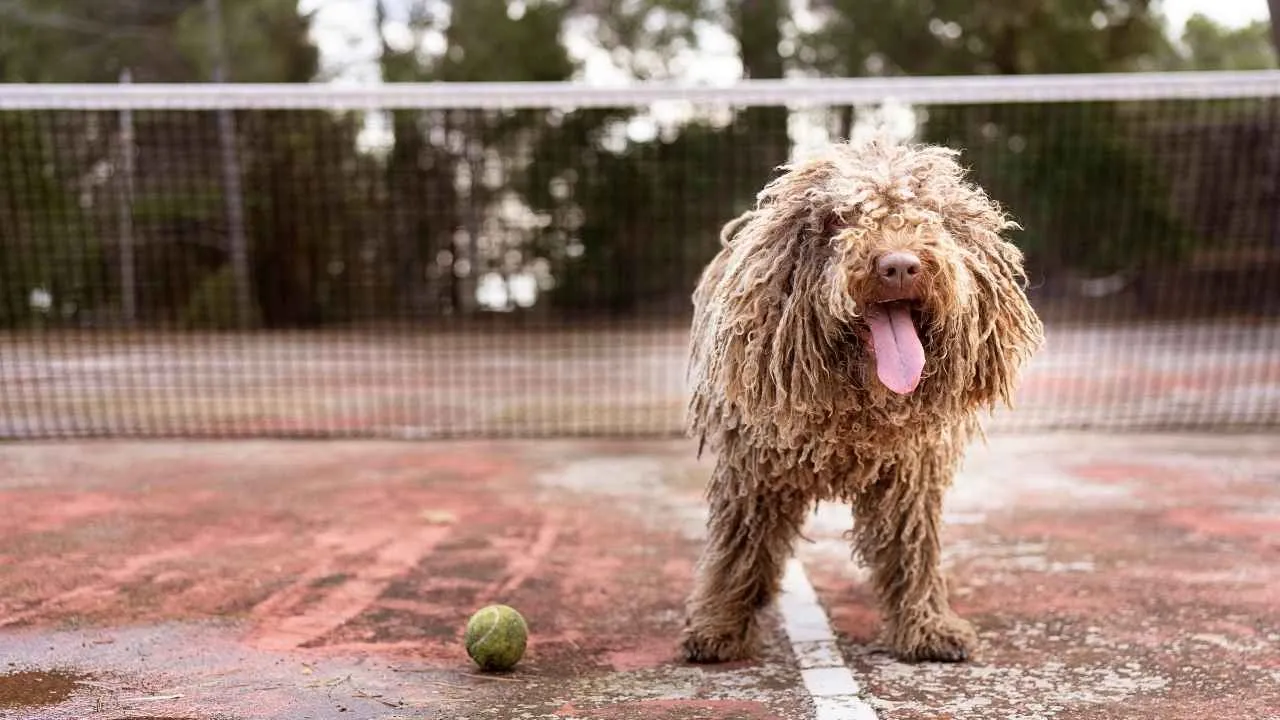
The Komondor is a striking Hungarian livestock guardian known for its long, corded white coat, resembling a walking mop. This breed’s appearance is as unique as its history, having been developed to protect sheep from predators in the Hungarian plains. Their imposing presence and protective instincts make them formidable guardians.
The Komondor’s distinctive coat requires meticulous care. Regular maintenance is essential to prevent matting and to keep the cords in good condition. Their grooming needs are time-intensive, but the result is a majestic and protective appearance.
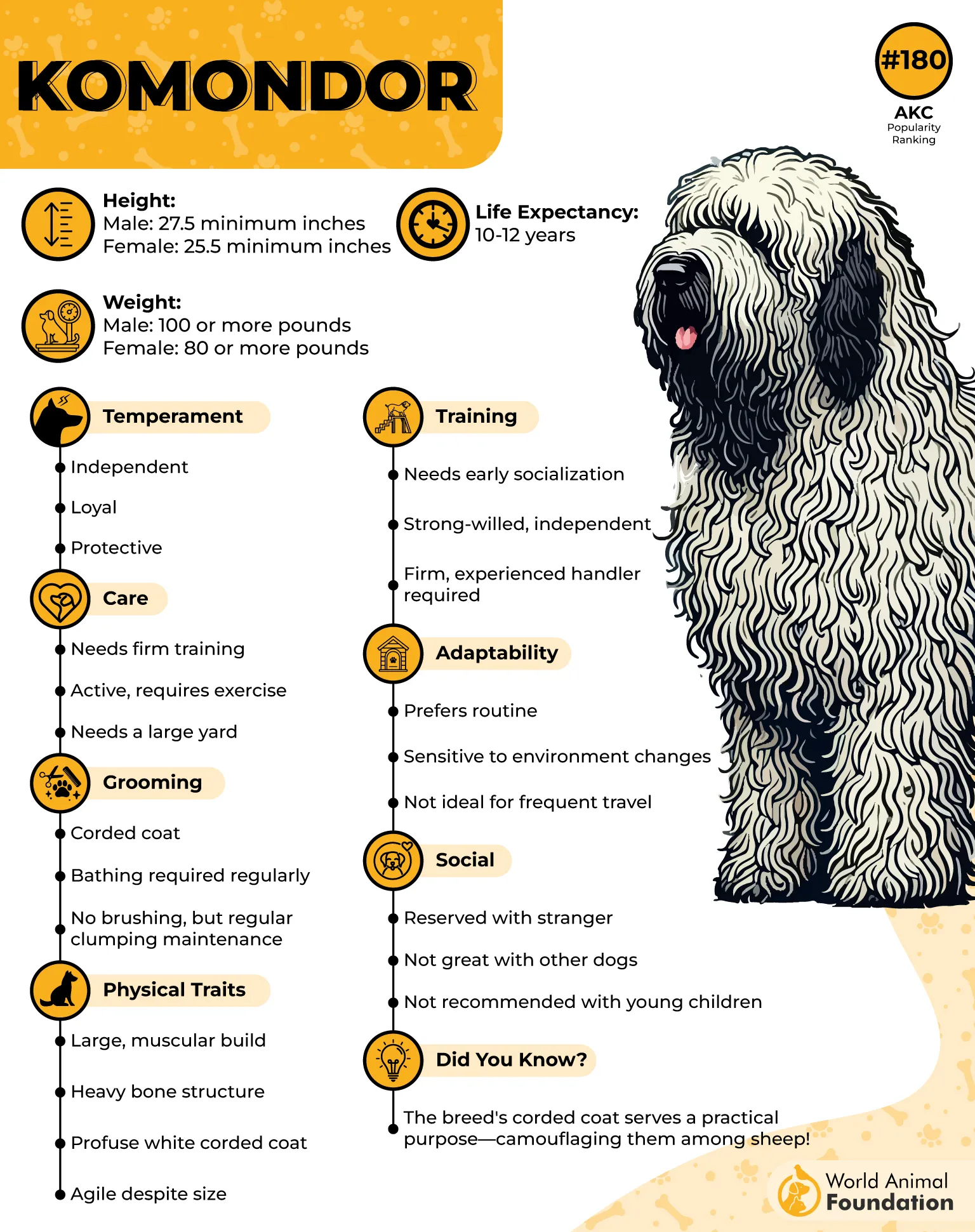
Training & Socialization
Early socialization and consistent training are crucial for the Komondor. Due to their independent nature, they may not always be eager to please, so positive reinforcement methods work best. Establishing clear boundaries and routines helps in managing their strong-willed temperament.
Living Environment
Komondors thrive in environments where they have space to patrol and guard. They are best suited for homes with large yards or rural settings. Their guarding instincts mean they may be wary of strangers, making early socialization with various people and animals important.
5. Azawakh
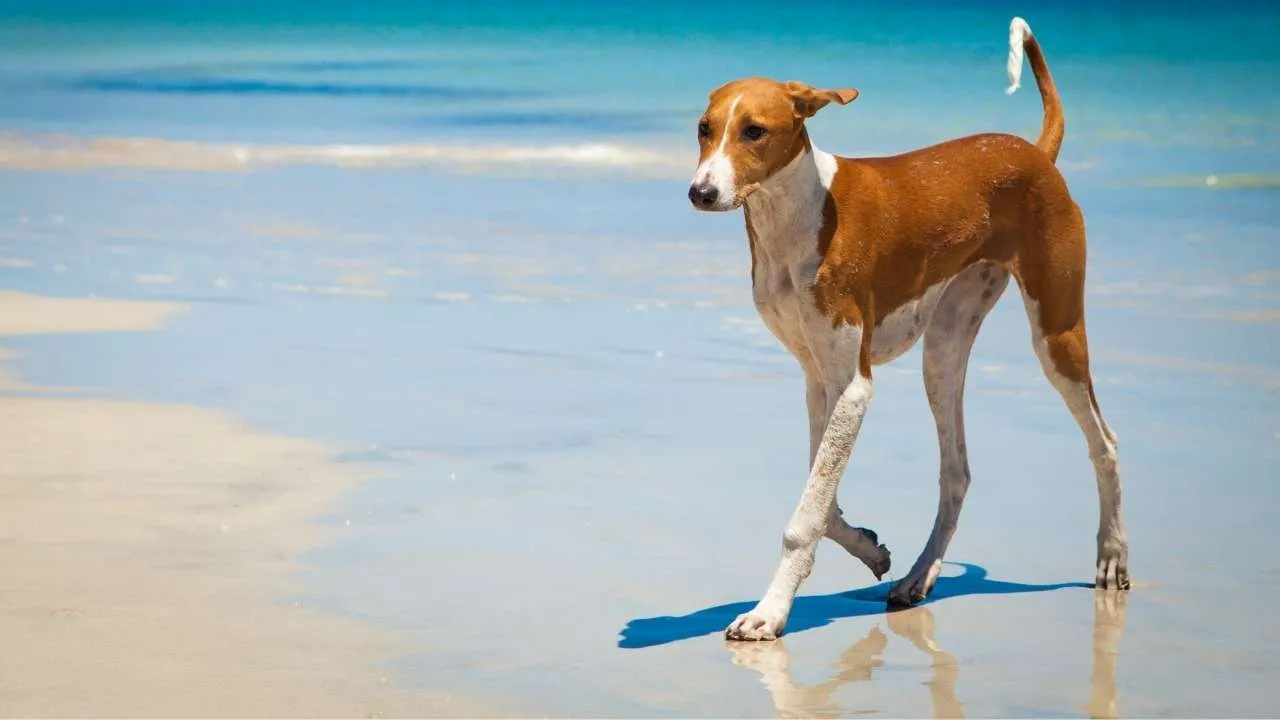
The Azawakh is a rare and elegant sighthound originating from the Sahel region of West Africa, specifically Mali, Niger, and Burkina Faso. Historically, these dogs were bred by nomadic tribes for hunting and guarding purposes.
Their sleek, athletic build and keen eyesight make them exceptional hunters, capable of reaching speeds up to 40 mph. Despite their noble appearance, Azawakhs are known for their loyalty and protective instincts toward their families.
Azawakhs are known for their lean, muscular bodies and graceful movements. Their short coat and minimal body fat give them a sleek appearance, while their deep chest and long legs contribute to their speed and endurance. These dogs are highly alert and form strong bonds with their families, often displaying a reserved demeanor toward strangers.
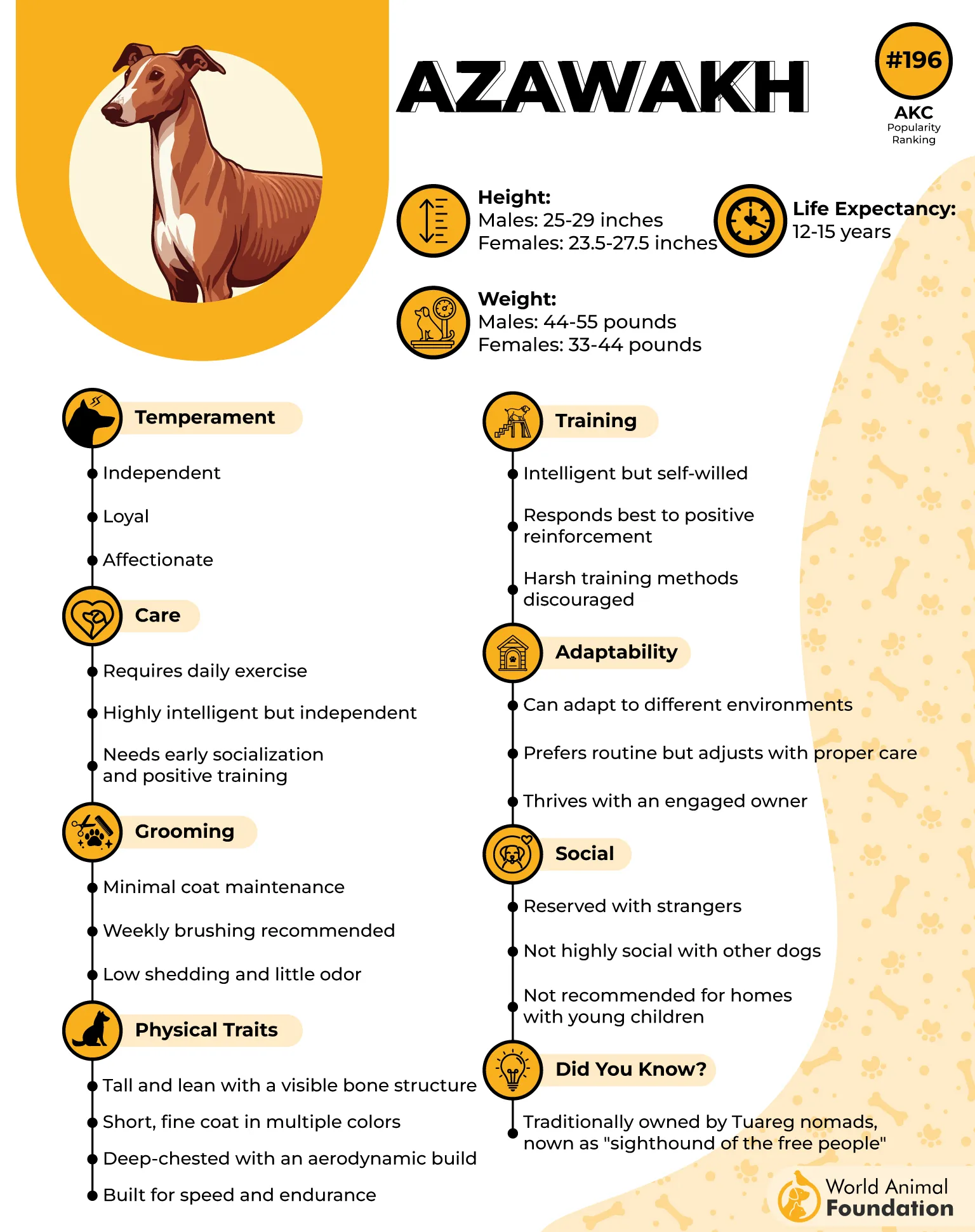
Grooming & Care
The Azawakh’s short coat requires minimal grooming. Regular brushing with a soft-bristle brush or grooming mitt is sufficient to maintain their coat’s condition. Due to their lean build, it’s essential to monitor their diet and exercise to prevent obesity. Regular exercise is crucial to keep them physically and mentally stimulated.
Training Tips
Training an Azawakh requires patience and consistency. They are intelligent but can be independent and stubborn. Positive reinforcement methods work best. Early socialization is vital to ensure they are well-adjusted and comfortable in various environments.
6. Harrier

As per WebMD, the Harrier is a medium-sized hound breed that originated in England. Bred primarily for hunting hares, these dogs are known for their stamina, keen sense of smell, and friendly disposition. Despite their hunting background, Harriers are excellent family companions due to their sociable nature and adaptability.
Harriers are known for their friendly and outgoing nature. They are social dogs that enjoy the company of other dogs and people. Their high energy levels make them well-suited for those who can provide them with regular exercise and mental stimulation.
Grooming & Maintenance
The Harrier’s short coat is relatively low-maintenance. Regular brushing helps to remove loose hair and maintain a healthy coat. They are moderate shedders, so consistent grooming is recommended. Regular veterinary check-ups are essential to monitor and prevent potential health problems.
Training Considerations
Harriers are intelligent and eager to please, making them relatively easy to train. However, their independent streak can sometimes make them a bit stubborn. Positive reinforcement techniques are most effective, and early socialization helps them become well-rounded adults.
7. Finnish Spitz
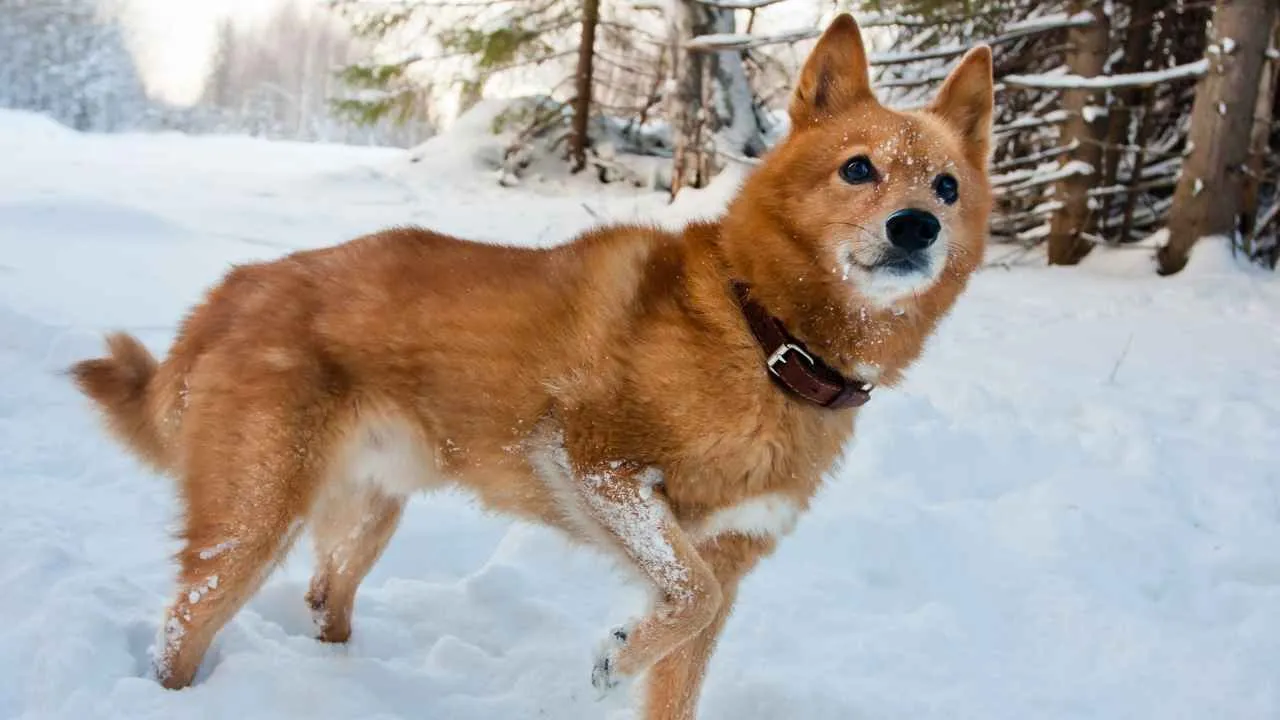
The Finnish Spitz is a small to medium-sized breed originating from Finland, where it is known as the country’s national dog. Bred primarily for hunting birds, these dogs are known for their distinctive bark, fox-like appearance, and energetic personality. Their vocalizations are unique and are often described as a “yodel-like” bark.
The Finnish Spitz is known for its striking red-gold coat and pointed ears. Their bushy tails curl over their backs, adding to their fox-like appearance. They are highly energetic and require regular exercise to stay healthy and happy. Their vocalizations are a key characteristic, and they are often used in hunting to alert hunters to the presence of game.
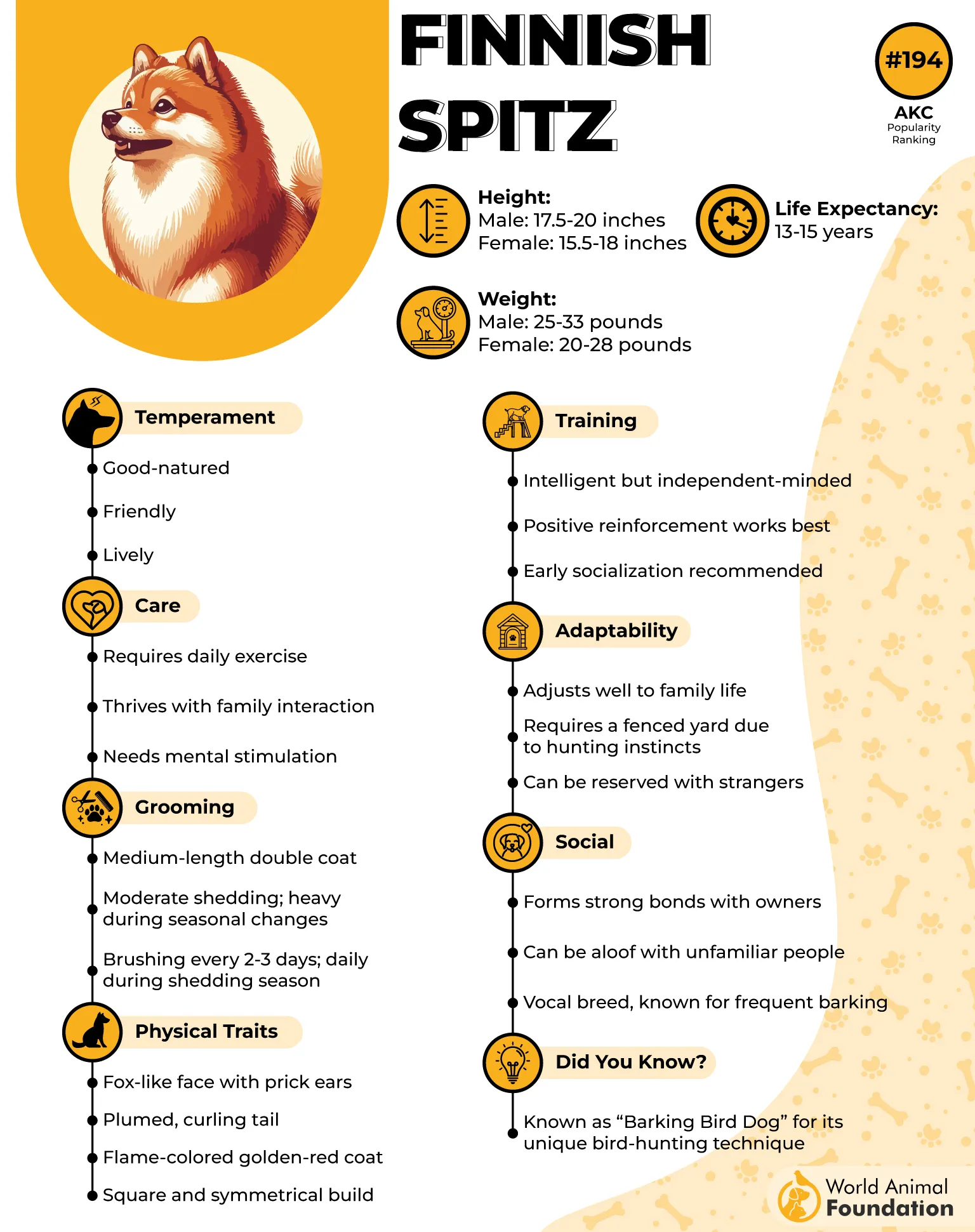
Grooming & Care
The Finnish Spitz’s double coat requires regular grooming to prevent matting. Brushing several times a week helps maintain their coat’s health. They are moderate shedders, with increased shedding during seasonal changes.
Training Tips
Training a Finnish Spitz requires patience and consistency. They are intelligent but can be independent and sometimes stubborn. Positive reinforcement techniques work best, and early socialization helps them become well-adjusted adults.
8. Sussex Spaniel
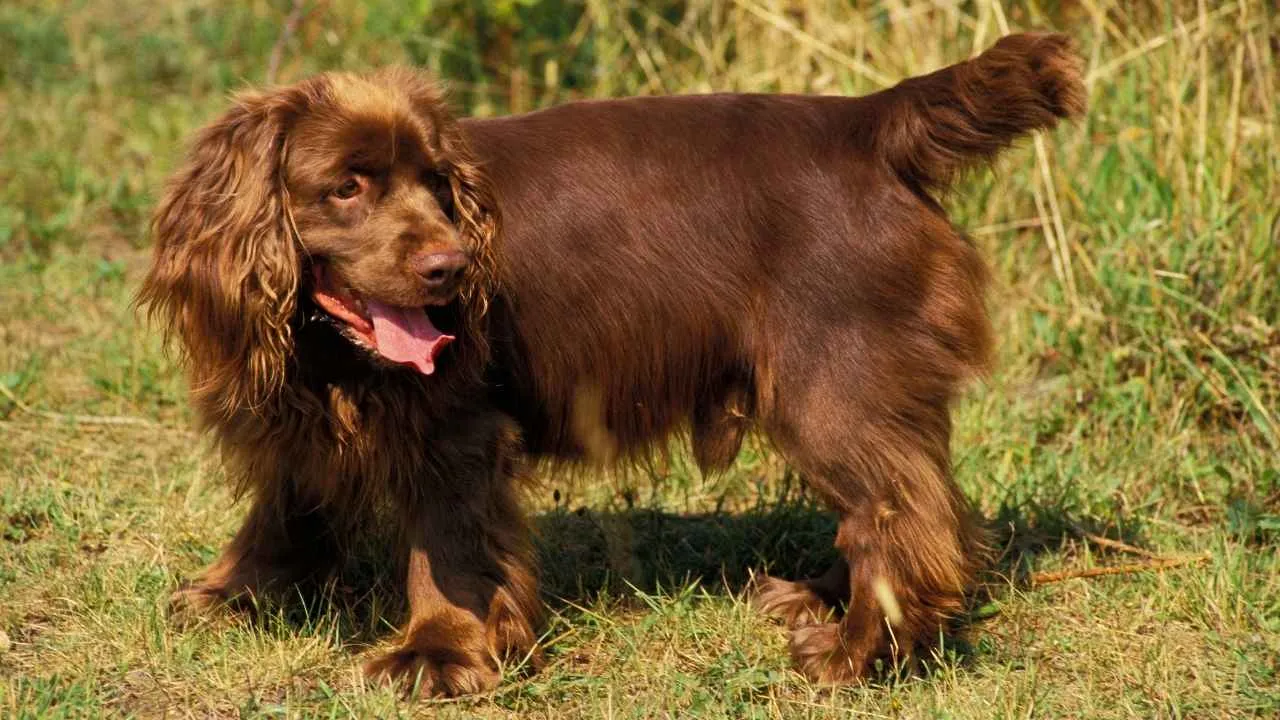
The Sussex Spaniel is a rare and charming breed from southern England, known for its rich golden-liver coat and distinctive low-slung body. Originally bred as a hunting companion, this breed excels in flushing game from dense underbrush.
Despite their hunting background, Sussex Spaniels are renowned for their gentle and affectionate nature, making them excellent companions for families and individuals alike.
Sussex Spaniels are known for their calm and even-tempered nature. They are affectionate with their families and can be reserved with strangers. Their gentle disposition makes them excellent companions for children and seniors alike. While they enjoy moderate exercise, they are not overly energetic, making them suitable for various living situations.
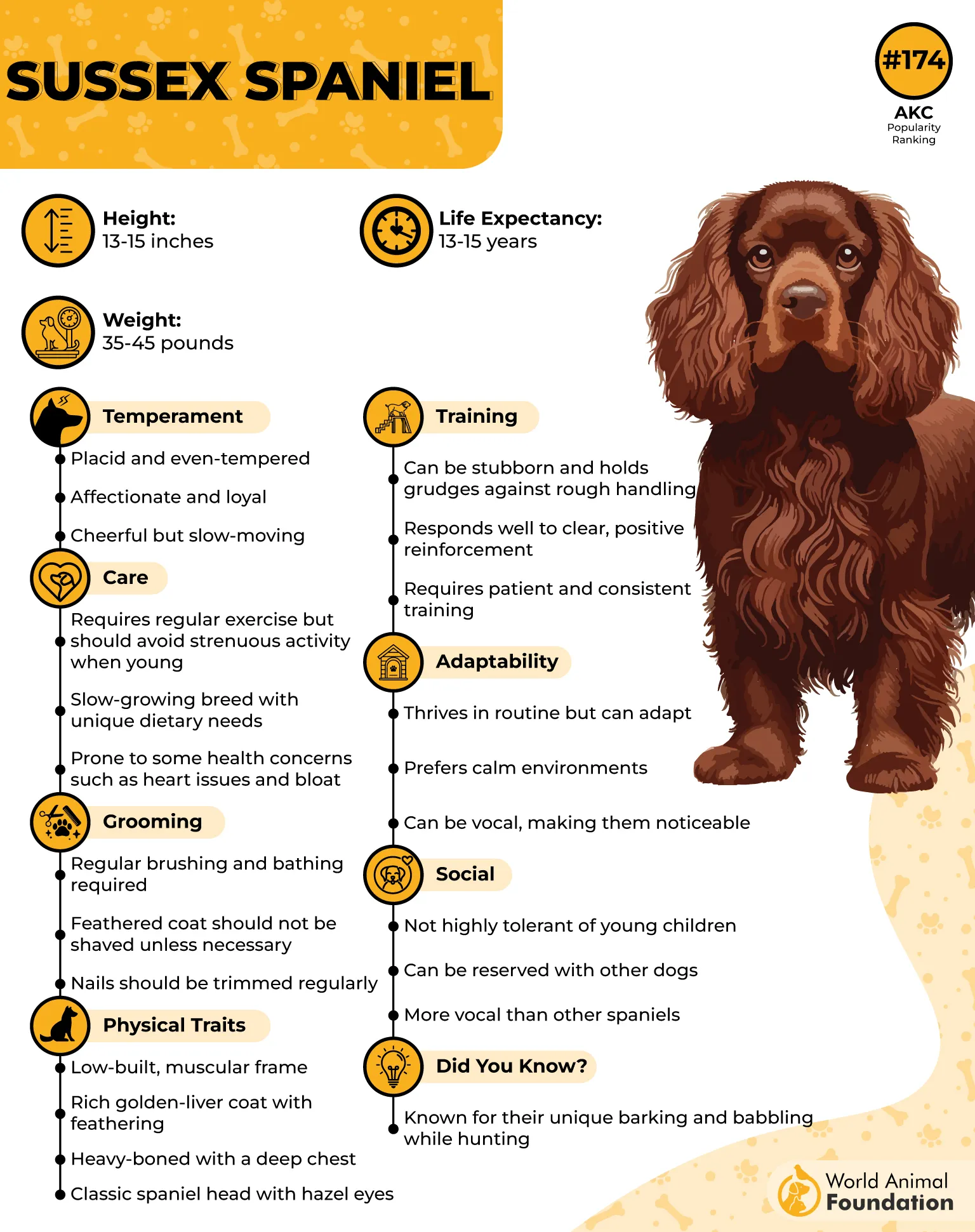
Grooming & Care
The Sussex Spaniel’s medium-length coat requires regular grooming. Brushing several times a week and occasional baths will maintain their coat looking healthy. Regular ear cleaning and nail trimming are also essential to maintain overall health.
Training Tips
Training a Sussex Spaniel requires patience and consistency. They respond well to positive reinforcement techniques and enjoy activities that stimulate their minds. Early socialization is important to ensure they are well-adjusted and comfortable in various environments.
9. Cesky Terrier
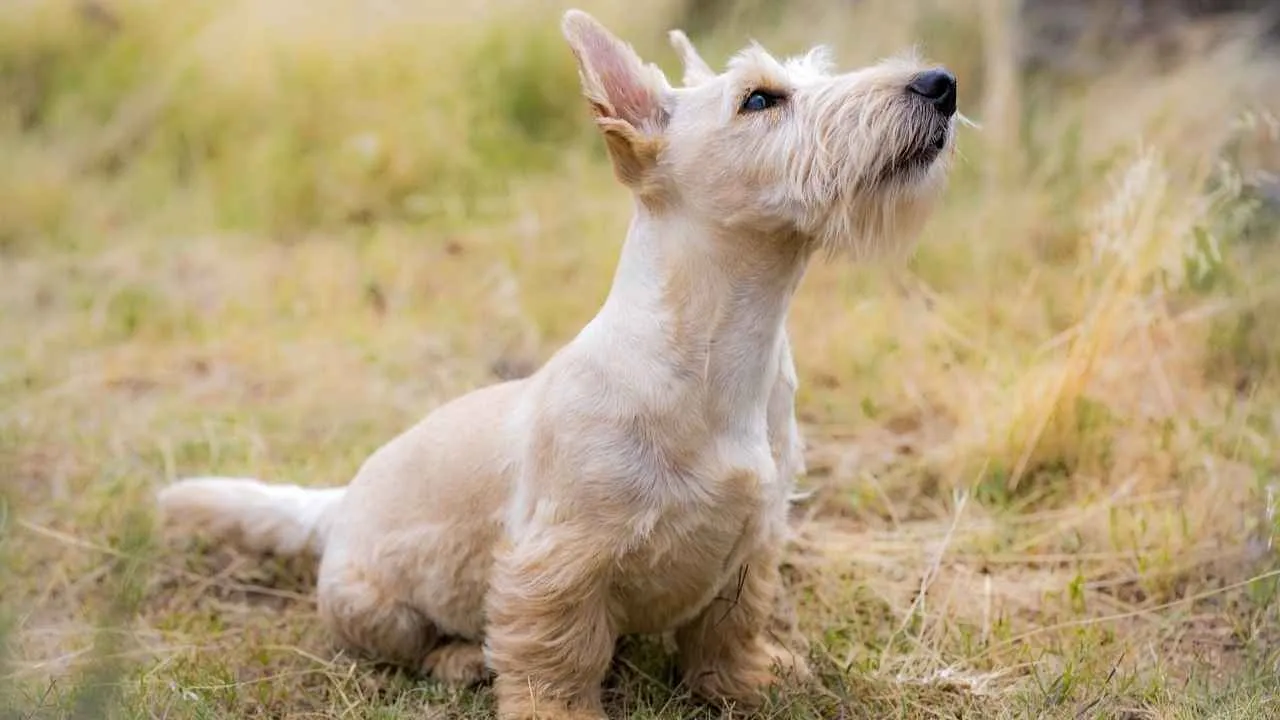
The Cesky Terrier, also known as the Bohemian Terrier, is a small yet sturdy breed from the Czech Republic. Developed in the 1940s by crossing the Scottish Terrier and Sealyham Terrier, this breed was created to be a versatile hunting dog. Today, Cesky Terriers are cherished for their friendly temperament and hypoallergenic coat, making them excellent companions for families and individuals alike.
Cesky Terriers are known for their calm and affectionate nature. They are friendly with children and other pets, making them excellent family companions. Despite their terrier heritage, they are less feisty than other terriers, displaying a more laid-back demeanor. Their intelligence and eagerness to please make them relatively easy to train.
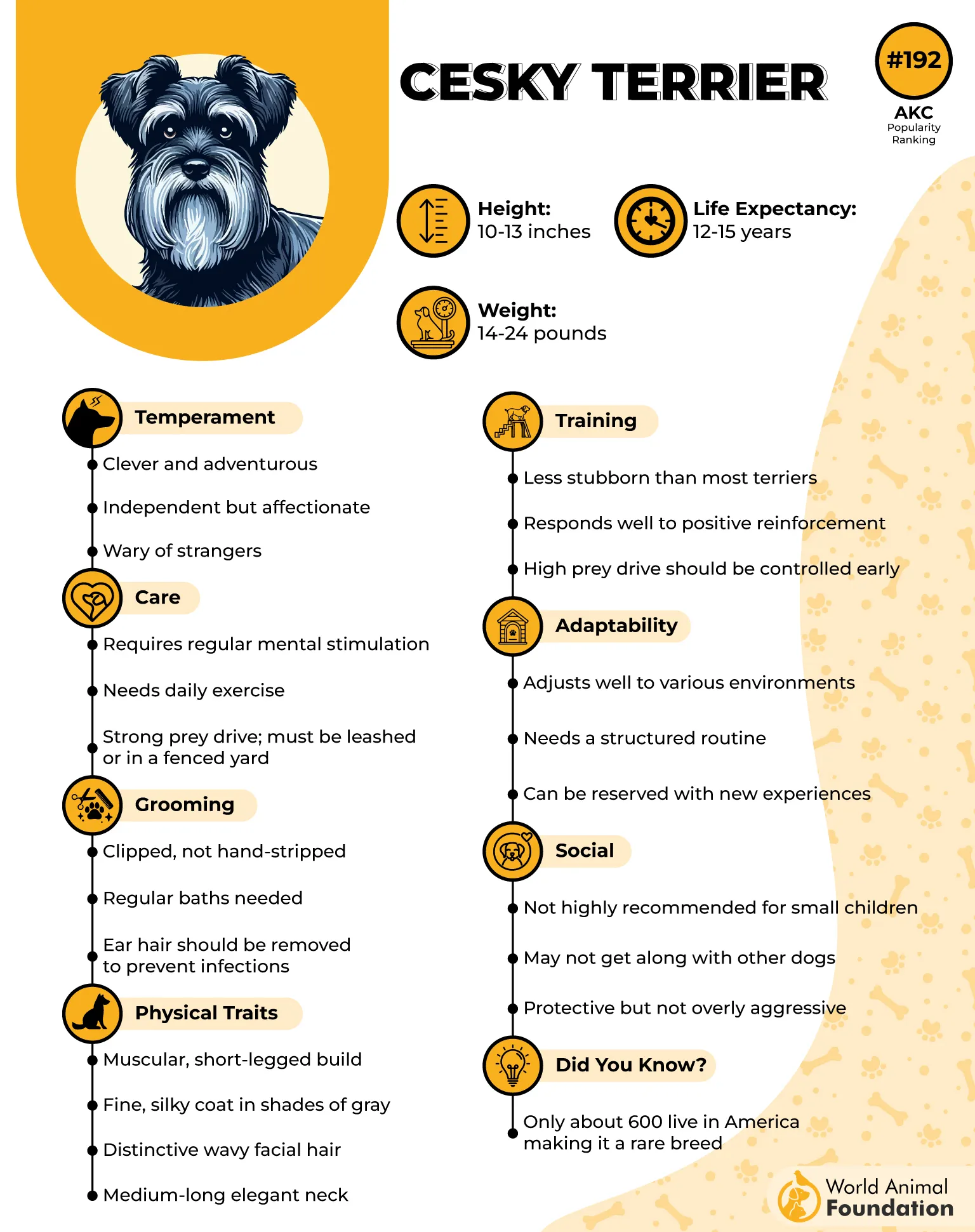
Grooming & Care
The Cesky Terrier’s silky coat requires regular grooming to prevent matting and maintain its appearance. Regular brushing and occasional hand-stripping are essential parts of coat care. Their ears should be cleaned regularly, and nails trimmed to prevent overgrowth.
Training Tips
Training a Cesky Terrier is a rewarding experience due to their intelligence and desire to please. Positive reinforcement methods work best. Early socialization is important to ensure they are well-adjusted and comfortable in various environments.
10. Canaan Dog
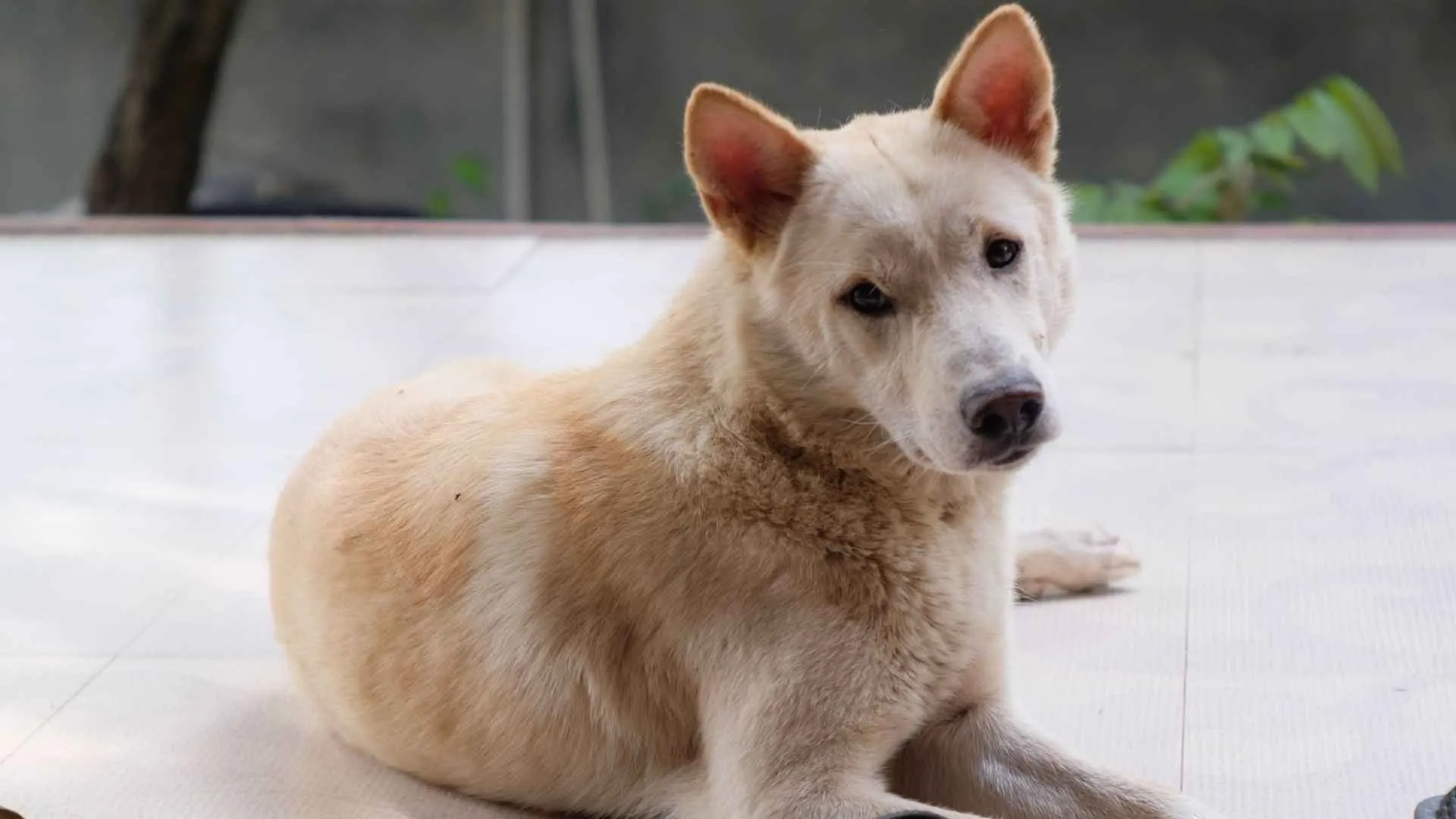
The Canaan Dog is an ancient breed from the Middle East, specifically Israel. Believed to have origins dating back to biblical times, this breed was used for herding and guarding livestock. Today, Canaan Dogs are known for their intelligence, loyalty, and versatility, excelling in various canine activities and making excellent companions for experienced dog.
Canaan Dogs are known for their loyalty and protective instincts. They are intelligent and independent, requiring an experienced handler who can provide firm but loving guidance. While they can be aloof with strangers, they are committed to their families and make excellent watchdogs.
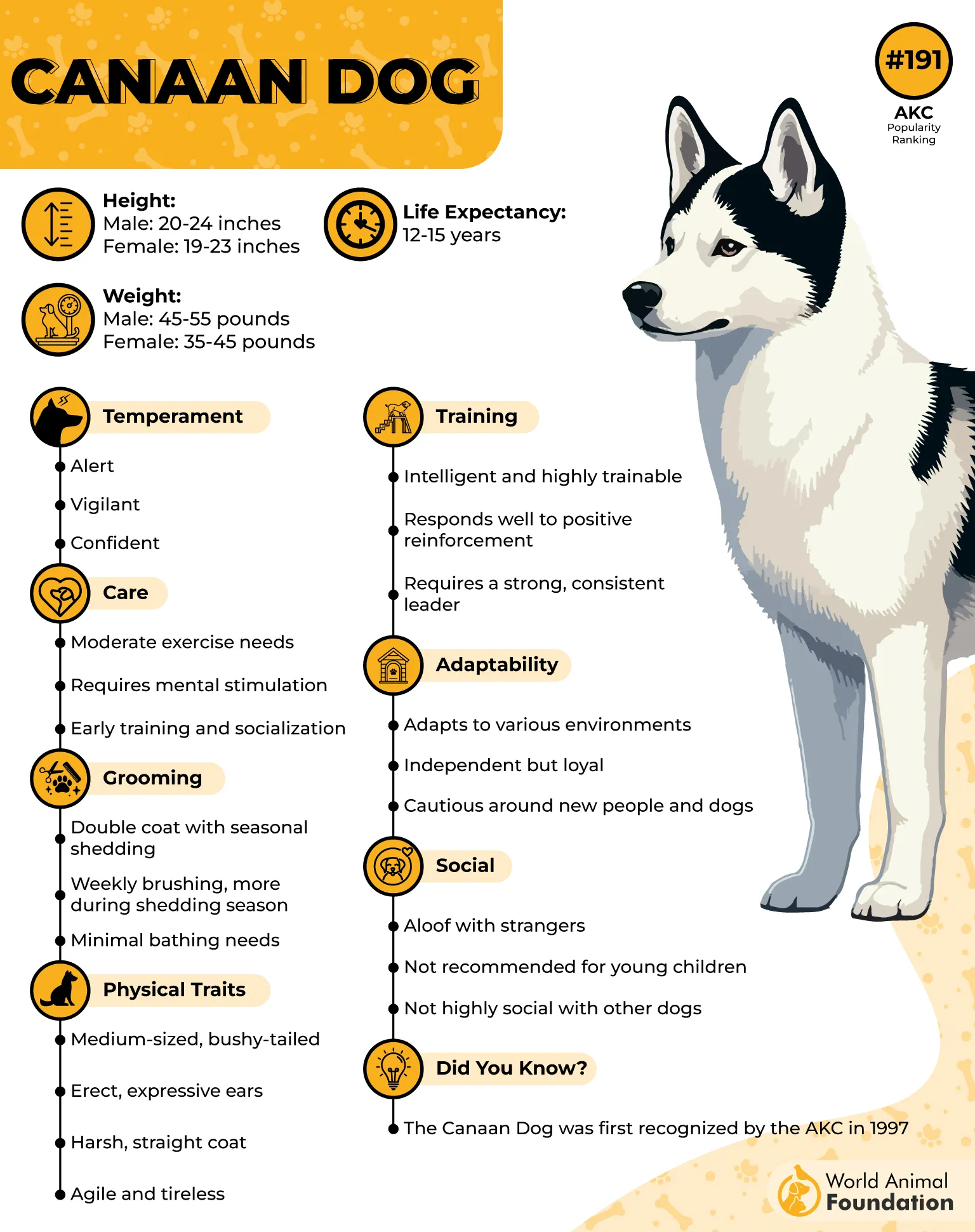
Grooming & Care
The Canaan Dog’s dense double coat requires regular grooming, including brushing several times a week and occasional baths. Regular ear cleaning and nail trimming are also essential to maintain overall health.
Training Tips
Training a Canaan Dog requires patience and consistency. They respond well to positive reinforcement techniques. Early socialization is important to ensure they are well-adjusted and comfortable in various environments.
Conclusion
While popular dog breeds often steal the spotlight, the world of dogs is rich with a wide variety of lesser-known and least popular dog breeds that deserve attention. Many of these breeds have unique traits that make them wonderful family pets and loyal companions. Whether it’s a beloved hunting breed for fox hunts or a smaller, energetic breed suited for apartment living, there is a perfect dog for every lifestyle.
Proper training is essential across all breeds—whether you have one energetic dog or multiple packs trained for various tasks. Some lesser-known breeds may have tendencies like excessive barking or a fiercely loyal nature that require patience and understanding from pet owners. Many of these dogs thrive as companion dogs and can coexist peacefully with smaller pets when socialized well.
Some other least popular dog breeds include the Wire fox terrier, Smooth fox terrier, Parson Russell terrier, Welsh terrier, Australian terrier, Bearded collie, Treeing walker coonhound, Neapolitan mastiff, Imaal terrier, Tibetan mastiff, Japanese chins, and American foxhound.
Exploring beyond the popular dog breeds opens the door to discovering great pets that bring joy, energy, and loyalty into family lives, proving that popularity isn’t the only measure of a dog’s worth in the dog world.


